.png)
At the Region is an ongoing feature that discusses the state-by-state training, certification and employment requirements of first responder departments across the nation. In this issue, At the Region looks at EMS requirements in FEMA Region VIII: Colorado, Montana, North Dakota, South Dakota, Utah and Wyoming.
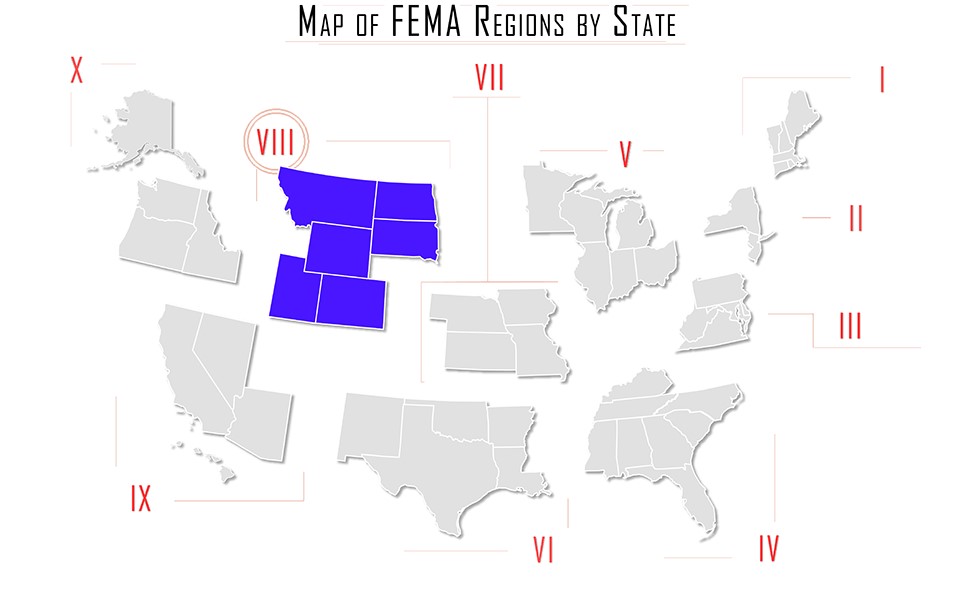
Emergency Medical Technician certification levels result from a combination of national requirements and state by state regulations. All EMT training must meet minimum standards provided by the National Highway Traffic Safety Administration (NHTSA); this includes fundamentals in areas such as anatomy, medicine, and trauma, but states determine the final designations and requirements. An independent organization, the National Registry of Emergency Medical Technicians, also provides guidelines, and, although these are not mandatory, NREMT exams are used as the basis for certification at one or more levels in 45 states. Because of the variation in training, the NREMT national certification as an EMT does not equate to a license to practice, and transferring local certification depends on state by state reciprocity agreements.
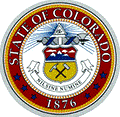
Certification of emergency medical care providers in Colorado is provided at the EMT, EMT-I, AEMT, and paramedic levels by the Department of Public Health and Environment. In order to certify, all applicants must register with NREMT and complete all written and practical examinations. In order to be eligible for testing, applicants must first complete an approved training course; a list provided by the state that meets NREMT standards is available here.
Applicants must also pass a Colorado Bureau of Investigation fingerprint background investigation, and provide a fee of $17.50 for this service. Once testing has been completed and all forms have been submitted, it will take four to six weeks to process the application and background check. The first EMS Certification is issued for three years.
Application Packet must include:
• A fingerprint-based background check submitted to the Colorado Bureau of investigation.
• A valid NREMT number at the provider level you intend to practice at.
• An image of your current and valid CPR card.
• An image of your current and valid ACLS card (EMT-I and Paramedic applicants only).
• An image of your lawful presence document such as a driver license or passport.
Colorado EMTs must renew every three years by submitting a completed application along with one of the following:
• Proof of NREMT certification;
• A refresher course plus attestation of skill by a course provider or medical director;
• Completion of the minimum required CE hours along with attestation of skill by a course provider or medical director (36 hours for State EMT and 50 EMT-I and paramedics, or 72 hours for NREMT EMT, EMT-I and paramedics).
Reciprocity
Colorado does not offer reciprocity for state certification; however, NREMT registration is accepted. Applicants who are not NREMT certified must submit their state training information to NREMT for approval, complete all examinations and requirements, and obtain their registration prior to applying in Colorado. Qualified applicants must complete an application and pass a Colorado Bureau of Investigation and FBI fingerprint background check; this check costs $39.50, and applicants should submit the fee along with their fingerprint card. Fingerprint processing may take from 8 to 12 weeks, along with the application processing time of four to six weeks.
** Intermediate-99:** Colorado offers EMS certification at the Intermediate-99 level. Since the NREMT no longer recognizes EMT Intermediate-99, they no longer issue NREMT numbers for that level. When applying for Colorado EMS certification, applicants who wish to certify at the Intermediate-99 level must upload documentation from the NREMT that shows they’ve passed both written and psychomotor tests. Those currently certified at the Intermediate-99 level can use the State CE and skills attestation method to renew their certification.
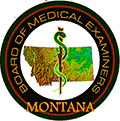 Montana
The Montana Board of Medical Examiners licenses emergency medical technicians at the First Responder, EMT Basic, Intermediate, and Paramedic levels. Current statutory regulations are easily searchable on website
The Board requires that EMTs:
Montana
The Montana Board of Medical Examiners licenses emergency medical technicians at the First Responder, EMT Basic, Intermediate, and Paramedic levels. Current statutory regulations are easily searchable on website
The Board requires that EMTs:• Be 18 years of age or older
• Possess a high school diploma or equivalent
• Be registered with NREMT at the license level requested or higher
To apply for a license, qualified applicants must send proof that all requirements are met, along with an, verification of licensure from every state in which the applicant has practiced when applicable, and the unopened results of a current self-query on the National Practitioners Data Bank. To request a self-query, applicants must input all required information on the Data Bank website, print the completed application, have the printed copy notarized, and mail it to the Data Bank for processing. There is an $8 fee associated with this process. Approval generally takes 10 days from the time the application is submitted. Current application fees are $30.00 – EMR Emergency Medical Responder $50.00 – EMT Emergency Medical Technician $70.00 – AEMT Advanced Emergency Medical Technician $100.00 – Paramedic.
To certify with NREMT, applicants must pass cognitive and psychomotor examinations conducted at an authorized test site. In order to be eligible for this testing, applicants must complete a state-approved EMT course that meets NREMT standards within two years taking the exam, provide verification from the Program Director that proficiency in EMT skills was demonstrated, possess CPR credentials for healthcare providers, and pass a state psychomotor exam. Applicants will also need to register on the NREMT website and pay a $70 application fee to obtain their Authorization to Test.
Reciprocity
Montana uses NREMT standards for its EMT licensing, and offers reciprocity to out of state EMTs who are registered with NREMT. Out of state applicants must also meet all other Montana requirements for EMT licensing as provided above, and supply information as required, including verification of licensure from all other states in which the applicant has been licensed or certified.

The North Dakota Department of Health Division of Emergency Medical Services and Trauma (DEMST) provides training, testing, certification and licensure of EMS personnel in the state. North Dakota EMTs must be both NREMT and State certified to practice, and all training, testing, certification, re-certification and licensure requirements for Basic Certification match NREMT standards. Persons under the age of 18 who meet all other requirements as defined by NREMT may be issued a state certification prior to registering with NREMT at 18 years of age. The single application for all levels can be found here
Basic requirements (based on level of certification) include:
• Completion of approximately 150 training hours from an approved program within two years of testing • Completion of NREMT written and practical exams • Verification by NREMT of CPR credential for health care providers and course proficiency • Completion of a cognitive and psychomotor exam • Completion of pre-testing registration process and payment of the fee as defined by NREMT
A list of authorized courses and dates is available. EMTs in North Dakota can earn free DEMST approved CEUs from American CME; the courses are 30 minutes each, and are also approved for CE credit from NREMT (contact NREMT for specific guidelines relating to how many hours are accepted for your certification and level). Re-licensure is required, based on the level of license.
Reciprocity
North Dakota does not publish any information related to reciprocity, while North Dakota recognizes NREMT, all providers must be certified in the state. For questions related to EMS Certification, please contact:
ND Department of Health, Division of EMS
1720 Burlington Dr
Bismarck ND 58504
Fax: 701.328.1702
E-mail: dems@nd.gov
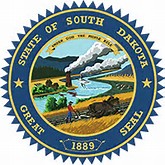
The South Dakota Department of Health, Office of Rural Health oversees the licensing of emergency medical technicians in the state at EMR and EMT level. The South Dakota Board of Medicine and Osteopathic Examiners oversees licenses and requirements for ALS Providers;EMT-Intermediate/85, AEMT, EMT-Intermediate/99, and Paramedic levels.
BLS Providers
In order to become certified in South Dakota as a BLS Provider, EMRs and EMTs must complete training and certification requirements. All EMRs and EMTs are encouraged to register with NREMT, and complete all exams and requirements. BLS providers must recertify every 2 years after completing the required number of Continuing Education credits, 16 for EMR, 24 for EMT, along with proof of a current CPR card, or proof of National Registry Certification and a copy of current CPR card.
ALS Providers
AEMT and paramedic providers must be licensed annually through the South Dakota Board of Medical and Osteopathic Examiners; forms and procedures are available on their website. All applicants must request a username and password from SDBOME to access information.
Reciprocity
South Dakota offers BLS reciprocity to EMTs who are registered with NREMT. In addition to submitting the application ,applicants must send their National Registry Card, CPR card, and any current state cards for review. Applications will be processed in two to four weeks.

The Bureau of Emergency Medical Services and Preparedness (BEMSP) oversees the EMT certification process for the state. Current laws, as of July 1, 2017 can be found here.An EMR provider must be 16 years of age, all other provider levels require 18 years of age.
Prior to certification, applicants must:
• Submit a photograph for the EMS ID badge
• Submit a copy of the American Heart Association approved CPR course certificate
• pay applicable fees
• Pass a background check,including an FBI background investigation if the applicant has not resided in Utah for the past consecutive five years
• Submit TB test documentation
• Complete an approved course and all examinations
The initial certification period is four years.
Reciprocity
As of 2017, Utah is part of the Recognition of EMS Personnel Licensure Interstate CompAct
State reciprocity outside the REPLICA program also exists:
• Complete the application
• Pay fees
• Submit DACS fingerprints for criminal background check (one time requirement)
• Submit current EMS license from another state or NREMT
• Submit CPR Provider card – CPR class must meet the AHA guidelines for Health Care Provider
• Submit Pediatric Education for Prehospital Professionals (PEPP) or Pediatric Advanced Life Support (PALS) (Advanced EMT and Paramedic only)
• Submit Advanced Cardiac Life Support card (Paramedic only)
• Submit 25 hours of CME completed within one year of application OR Submit proof of initial certification/licensure completed within one year of application
• If not NREMT certified, successfully complete the NREMT assessment exam corresponding to the level of license being sought
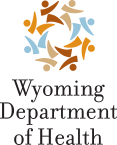
The Wyoming Office of Emergency Medical Services (OEMS) provides the requirements, testing, and licensure for pre-hospital care providers in the state. All EMTs must meet training requirements by completing a course that is Division approved, or accredited by Commission on Accreditation of Allied Health Education Programs (CAAHEP). EMR providers must be 16, EMT and above must be at least 18 years of age.
After training, applicants must:
• Pass a FBI Wyoming Department of Criminal Investigation background check
• Submit a copy of all course information, including documentation of clinical, lab, internship, field and didactic hours. Included DoD course information if the training was received from the DoD
• Submit a copy of their American Red Cross Professional Rescuer card or BLS Healthcare Provider CPR card (must meet American Heart Association requirements)
• Pass the Wyoming State Examinations
• Applicants for licensure who are licensed or certified in another state, or through the National Registry of EMTs, shall not be required to take the Division Licensure Exam if they meet all other requirements for licensure under this chapter.
The initial certification period is 2 years.
Reciprocity As of 2017, Wyoming is part of the Recognition of EMS Personnel Licensure Interstate CompAct (REPLICA) program, recognizing certification and training for EMTs from 11 states. Currently (as of 9/2017) commission members are: Alabama - Colorado – Georgia - Idaho – Kansas - Mississippi -Tennessee - Texas - Utah – Virginia – Wyoming. Applicants for licensure who are licensed or certified in another state, or through the National Registry of EMTs, shall not be required to take the Division Licensure Exam if they meet all other requirements for licensure under this chapter.








